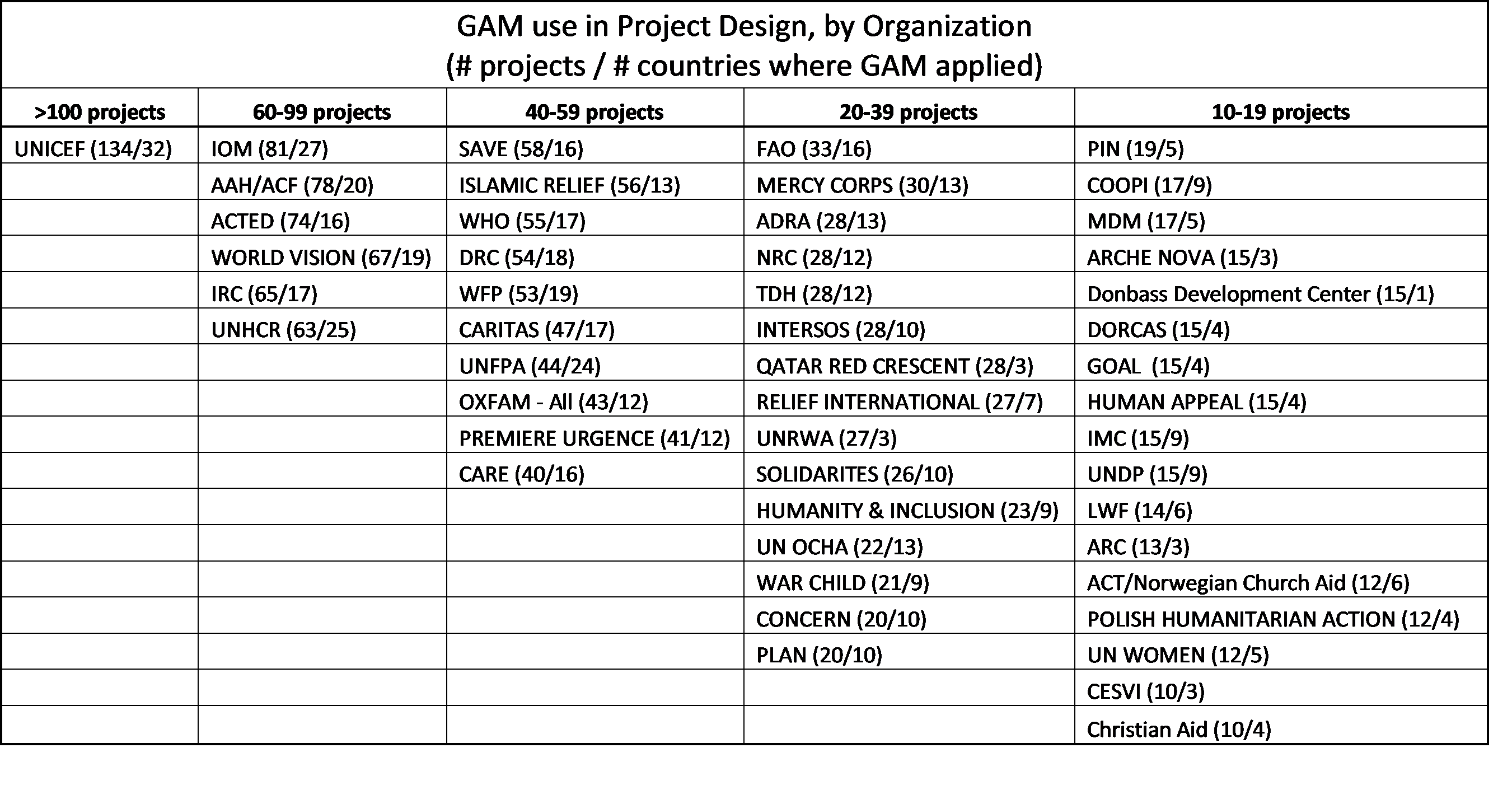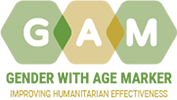Many efforts have been made in the past 20 years to make humanitarian programming more gender inclusive.
The GAM is not a “quick fix,” and it won’t work unless people actually reflect on each of the 12 program elements and DECIDE how these will be addressed in their project.
Completing the GAM thoughtfully and honestly greatly increases the likelihood of gender- and age-sensitive programming.
2019 GAM Champions!
Congratulations to the users below who have applied the GAM in the design of 10 or more projects in countries where they work.

GAM reports now available!
To get a report of the information you entered, click here and enter your GAM reference number. It will provide a report on your previous submission – useful to guide you in monitoring! If you have forgotten your GAM reference number, please email with your name, organization and location to iasc-gam@un.org
MONITORING:
A sample of global GAM monitoring results (October 2019) is available here.
If your program or project been underway for three months or more, it’s time to use the IASC Gender with Age Marker for monitoring.
Results from the GAM speak directly to Commitments from the Agenda for Humanity, including gender-responsive planning and programming; integration of SGBV prevention and response in humanitarian action; meaningful and effective engagement of affected people especially women and girls; improving transparency and accountability throughout the humanitarian program cycle.
Apply the GAM to ensure your organization and your country response plan are on track and delivering assistance effectively to women, girls, boys and men of all ages.
Please use Chrome or Firefox to open the GAM – it does not work on Internet Explorer!
[wpvideo YU8HPpom]
DON’T WAIT for a funding call for proposals to try the GAM — you can apply it to new (Design Phase) or ongoing projects (Monitoring Phase) ANYTIME!
Information is available in French, Spanish and Arabic in the main menu. Language resources are being updated as quickly as possible.
With more than 130 million affected by crises, efforts to improve the quality of humanitarian response over the past 20 years have produced an abundance of tools, guidelines and markers, especially with respect to gender equality.
For the first time, humanitarian experts have designed a tool which, based on a code, provides an automatic and objective calculation of the quality of humanitarian programming. The Gender with Age Marker, which replaces the old IASC Gender Marker, has been piloted since 2015. The IASC GAM codes programs and projects on a 0-4 scale, based on responses to questions about 12 key gender equality measures. Users consistently report finding the multiple choice questions easy to answer, and the simple guidance provided with the results, helpful.
The GAM is much more than a gender marker with a monitoring phase. It examines levels of accountability, protection and addresses the concept of “leaving no one behind”.

